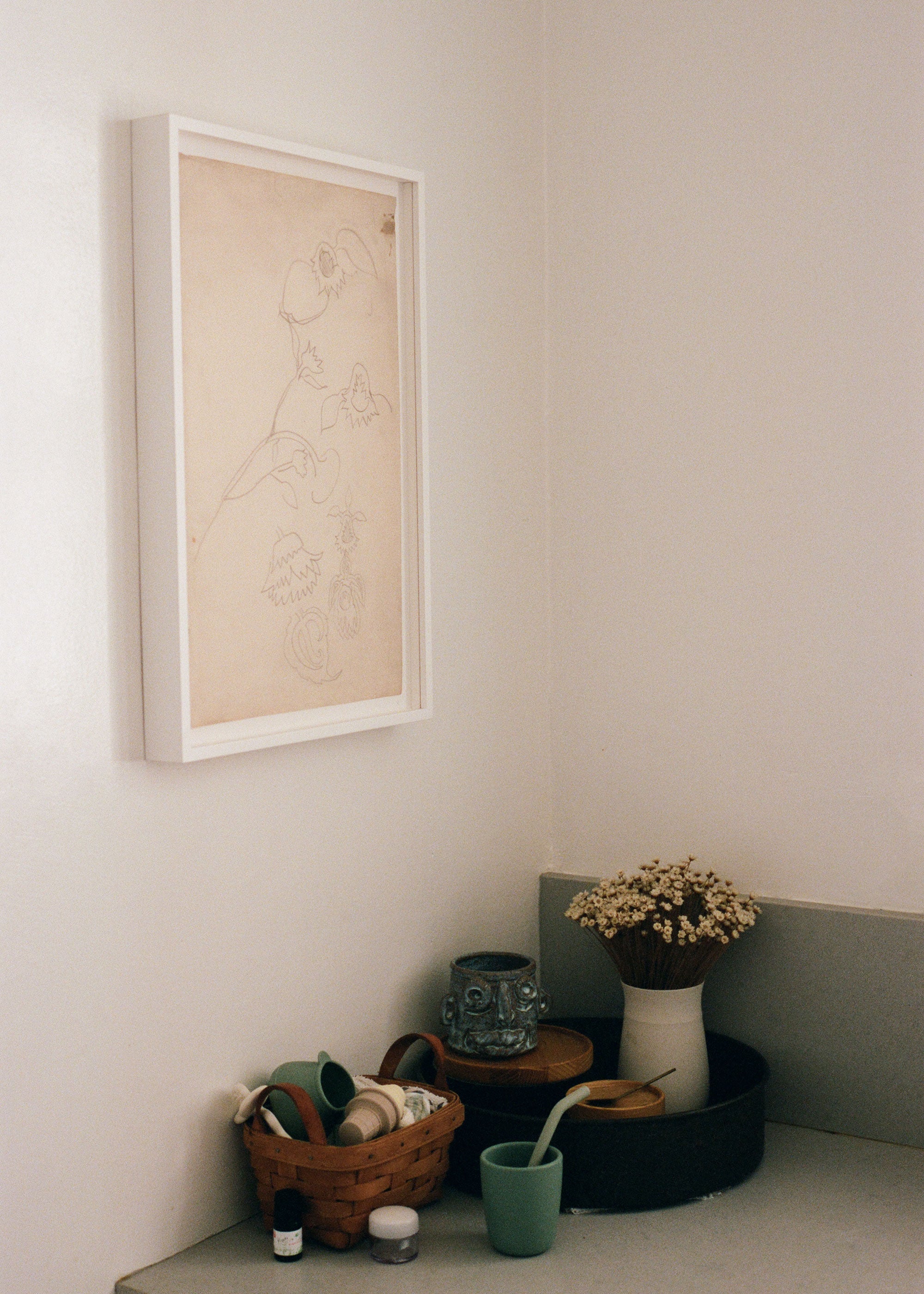
Object Lesson: Luc Fuller
I try to be conscious of the number of things that I live with and avoid objects that don’t give something back to me. There is a fine line between “stuff ” and what I consider to be useful belongings—I try to avoid the former at all costs! As someone who makes objects, my biggest fear is that I’m just adding more stuff to the world. I always try to ask myself, “Will this bring meaning, or be useful, to someone else in five, 10 or 25 years?” For me, collecting is very personal. The practice is less about amassing things and more about finding what adds beauty and texture to everyday life. I would be hesitant to consider myself a collector, but I do love to live with things that I find meaningful or useful. Often, this is less about the function of an object and more about its spirit—how an object makes me feel, who made it, the memory associated with it or how I acquired it. Here are a few of my favorite things.
Hot Dog Clock by Peter Shire and Ricky Swallow
This clock was a wedding present from our dear friend and a very special artist, Ricky Swallow. He created it in collaboration with Peter Shire, another Los Angeles-based artist and designer who needs no introduction. This piece, made from very humble materials—hot dog baskets, lacquered wooden balls and a small piece of Memphis-era Sottsass Formica laminate—is the perfect balance of high and low, while also managing to be quite beautiful and poetic. In my mind, its design language evokes Josef Hoffmann’s furniture and domestic objects, but instead of industrial materials, it’s as if he had had to scavenge a ballpark.

Mug for Swid Powell by Robert Venturi and Denise Scott Brown
A couple of years ago, I bought a pair of these mugs designed by architects Robert Venturi and Denise Scott Brown off of eBay. Despite having a cupboard full of beautiful handmade cups from talented friends and wellcrafted ceramics from the likes of Heath and Hasami, this funny little ‘80s granny mug is the one I drink tea out of every day. Originally developed for The Fabric Workshop and Museum in Philadelphia, the architect duo created the pattern as an ode to stationers’ supplies. According to Scott Brown, however, it evolved “to look more like the blackand-white blobs on the covers of composition notebooks that American children use in school.” I am forever indebted to these two architects for my approach to design. Equally known for their critical and scholarly but never pretentious writing, teaching and lectures, they left behind a polarizing body of architecture. I don’t love everything that they made, but I do love their spirit, which is perhaps most famously summed up by their playful take on Mies van der Rohe’s “Less is more”—instead, they declared, “Less is a bore.”

Tramp Art Box
My aunt, a self-proclaimed “junker” and antique collector, has an incredible collection of tramp art boxes from the 1850s that have lived unchanged on the same mantle for as long as I can remember. Five or six years ago, I visited her house for the first time after a long spell away and saw them again. I was struck by just how much magical energy these little objects reverberated. I purchased this one on eBay a few years back, and it now holds special family photographs, notes and bits of ephemera.

Drawing by Charles Burchfield
This drawing of sunflowers by the American painter and visionary artist Charles Burchfield circa 1915—perhaps one of the humblest and quietest objects that we live with—is something that I draw inspiration from every day. It serves as a reminder that even a few lines with a pencil on paper can still be meaningful 100-plus years later. The work is also really beautiful to me from a material perspective. Drawn on newsprint, it has deteriorated somewhat over the years but simultaneously developed a fragile, yet gorgeous patina. I feel very fortunate to have this piece in our collection, and I’m forever grateful to Amy Adams of Adams and Ollman Gallery in Portland, Oregon with whom I traded work for this wonderful piece.

Spiritual Objects Cutting Board
The Cutting Board was the first piece that I completed for Spiritual Objects and one that remains a favorite of mine. I was working on several other objects, all at various stages of completion at the time, and the cutting board eked its way out ahead of the others. It’s probably the only thing that I’ve gotten right the first time around, without any failed drafts, design revisions or tweaks. I was trained as a painter and still consider myself a painter among other things—dad, designer, artist—so in addition to it being a nod to my love of painting, the board also gets to the heart of my design ethos, which is to make art useful or to make art out of useful things.








